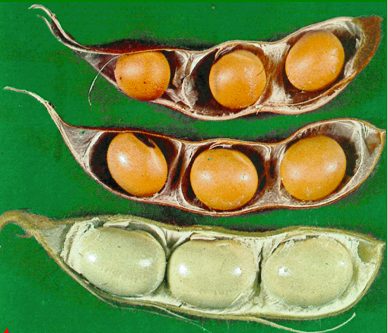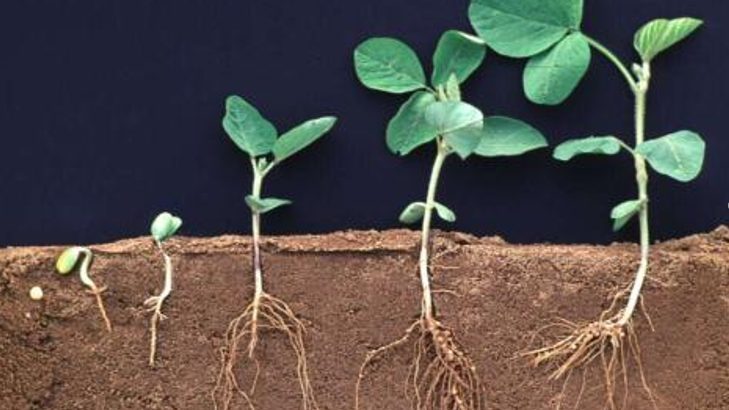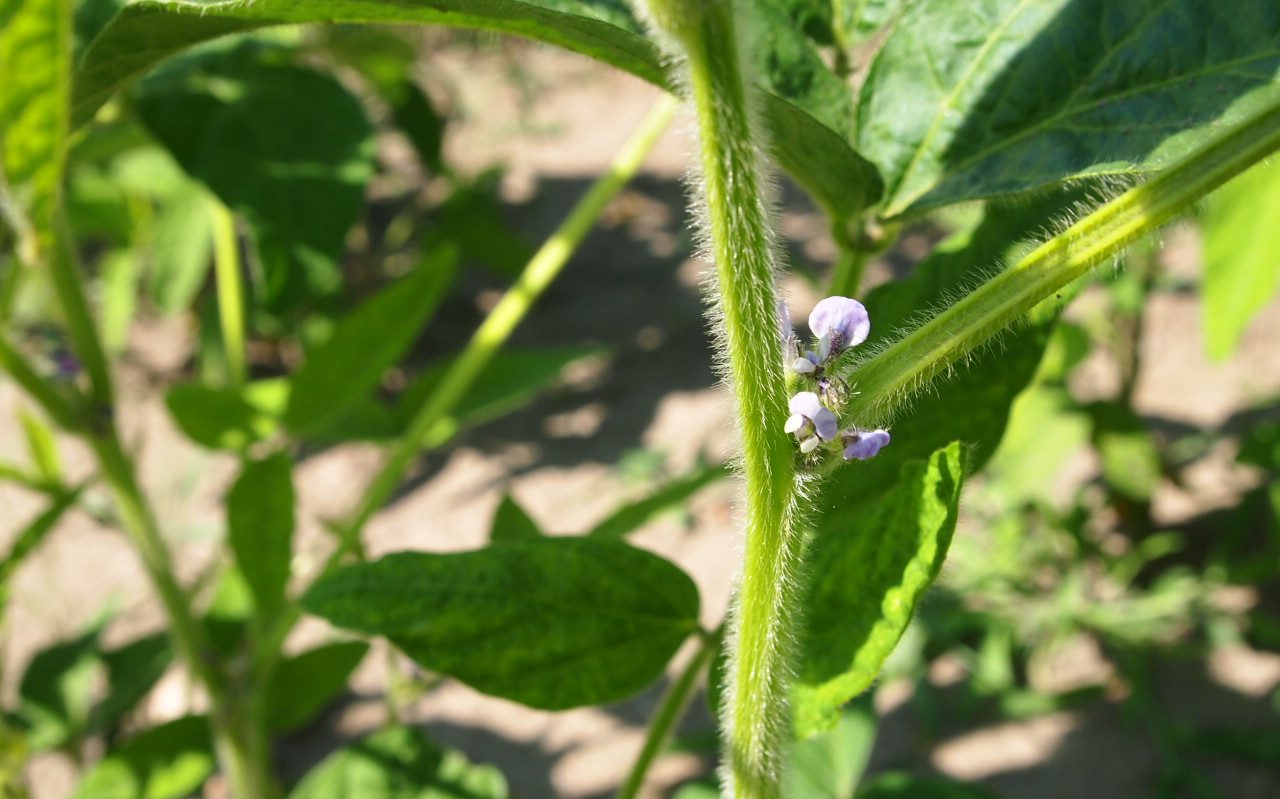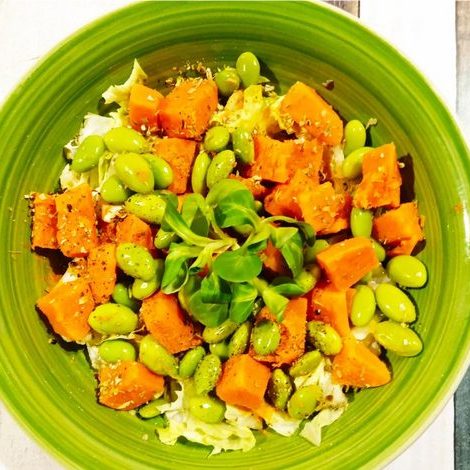Interview with Dr. Svetlana Balešević Tubić Author: Anne Moïta Ngarboui, intern for PR at Global Bean
Maybe you have heard of, if not already grown and tasted Edamame, these soybeans that are harvested before they arrive to maturity, with a mild and buttery flavour once boiled or roasted.
Edamame is relatively new in Europe, though it has been known in Japanese, Chinese and other East Asian cultures for centuries if not millenia. In the Japanese name edamame“枝豆”, eda (枝) means branch or stem, and “mame” 豆 “bean”, literally translating to “branch bean”. In China, it is called Maodou“毛豆” “furry bean”, referring to the soft fur-like hair on the pod, and stems.
What are the challenges and opportunities of edamame cultivation in Europe? Is it suitable for gardening? How does one consume it?
To get insight into these questions, let’s first have a quick look at soybean production at a global scale, then at the challenges of cultivating edamame in Europe, and finally how you can grow it in your gardens and what you can do with it.
Sections:
- Global soybean production
- Cultivating Edamame in Europe: Challenges and opportunities
- [Information] Life cycle of soy/edamame
- Edamame in your gardens?
- Consuming Edamame
Global soybean production
With 77% of the soy production used for animal feed, edamame – used purely for human consumption – is an opportunity for farmers to cultivate the plant in other ways and a great way to shift those numbers. Dr Svetlana Baselvic Tubic, agronomist, 25 year expert on soybeans, and part of the Global Bean Network aims to contribute to that by bringing knowledge to the farmers, and told the Global Bean team more about Edamame cultivation.
Cultivating Edamame in Europe: Challenges and opportunities
Edamame cultivation is of course similar to that of soy: it fares well in a warm climate, its original cultivation conditions, and has an affinity for warm soil. In Europe, that is information to behold and to transmit to gardeners and farmers, since the soil cools down during springtime.
The main difference between soybean and edamame cultivation is the harvesting period.

Farmers oftentimes don’t know the best time to harvest the soybeans for edamame, when it is incredibly important so that the edamame does not lose its value in terms of quality and taste.
Here goes: for a sowing from April to beginning of May, the harvesting period would be mid June to mid July for edamame, whereas it would be end of August and September for ripe seeds.

Good news is – and Dr Balešević-Tubić was pleasantly surprised about it – there are already seed suppliers in Germany, a sign of the rising interest for soybeans in Austria, Switzerland and Germany.

Furthermore, the awareness of consumers for healthy and safe food could act as a motivation for farmers, since it represents a new market and profit opportunity.
From an environmental standpoint, edamame possesses nitrogen-fixing abilities like soy and other legumes, enabling less artificial nitrogen-fertiliser use. Edamame is suitable for intercropping methods for example.
[Information] Life cycle of soy/edamame
Soy and therefore edamame crops are photoperiodically sensitive, meaning that they react to the duration of the alternance between night and day: They need long nights and short days to switch from the vegetative stages – when most of the development of the plant structure happens, roots, shoots, leaves for photosynthesis – to reproductive stages – when flowers grow, leading to fruit formation.
The total vegetative period lasts from around 90 to 120 days.
There are six vegetative stages from seed germination until the plant reaches the reproductive stage.

There are eight reproductive stages with flowering, pod filling and maturation (which are the end stages of edamame and soybeans).


There are different maturity groups, depending on the duration of the vegetative period. See the cultivation instructions for more information.
The vegetative stages are when most of the development of the plant structure happens, roots, shoots, leaves for photosynthesis.
Edamame in your gardens?
Though soybeans are often grown on huge acres, edamame cultivation is not only suitable for large-scale production, but also for smaller gardens.
Dr. Svetlana Balešević-Tubić mentions that the plant would have a predominant place in her ideal garden. Indeed, it has nice violet and white flowers, benefits the soil, and the beans are easy to harvest. One can use already existing pea-harvesting machinery for example, though edamame is also suitable for harvesting by hand.

Edamame doesn’t like more acidic soils. If you’re planning to grow some, try to choose a part of your garden with soil with a neutral pH, ideally with clay and loam – and not too sandy. Interrow cultivation is a suitable method for edamame.
In terms of irrigation, edamame needs to be well watered. Especially the beginning stages – seed germination – and the stage of seed filling – when the actual beans start to grow in size – are critical stages of soybeans and edamame regarding water supply. These happen in the second half of July and beginning of August. At the beginning of the vegetative period, controlling weeds is important.
Edamame aso has an ability to spread and branch out, therefore it is crucial to leave some space for growing between the seeds.
Finally, store your edamame in the refrigerator and the freezer after harvesting.
Consuming Edamame
Edamame contains antioxidants, is delicious, and very easy to cook and prepare. You can boil it, steam it, or pan fry-it, and season it with salt or chilli flakes for example. Then use it as a side dish, or add it into your salads and other meals!

So, are you ready to plant Edamame in your gardens?
-Dr. Svetlana Balešević-Tubić, The Global Bean Team
Learn more:
- Harvesting soybean – Vuk Đorđević, Svetlana Balesevic Tubic, Jegor Miladinović
- Soybean-Edamame Cultivation instruction – The Global Bean

